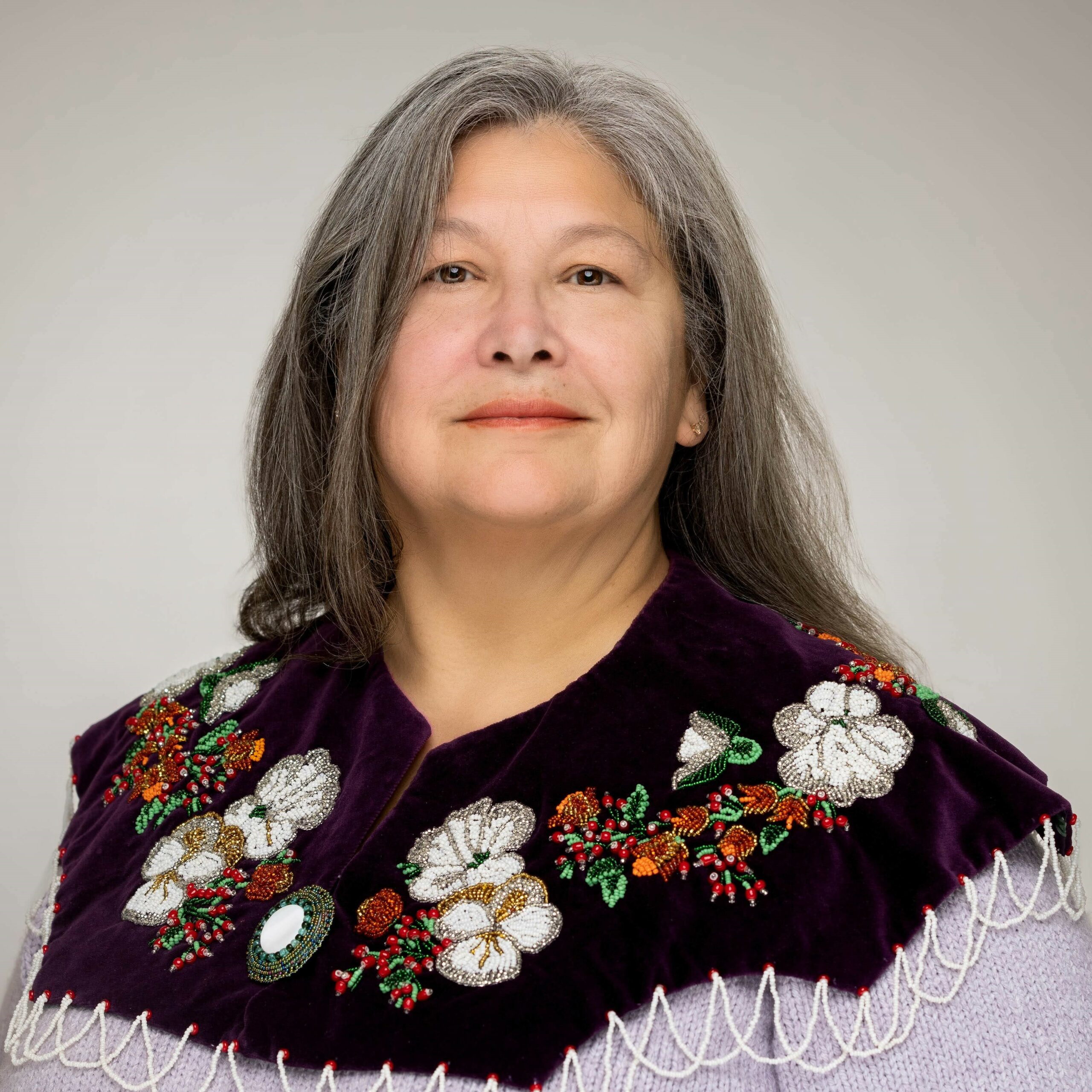McGill launched the Indigenous Knowledge Holder Series in 2016 with the goal of enriching the University community by inviting Indigenous Knowledge Holders to share their scholarship, work, and advocacy. Whether they be wampum belt holders, storytellers, artists, activists, hereditary leaders, or academics, Indigenous Knowledge Holders encompass generations of knowledge embedded within the cultural and epistemological worldview of Indigenous communities that span generations.
This year, McGill’s Indigenous Knowledge Holder is Owisokon Lahache, a Haudenosaunee Mohawk artist and Matriarch of the Turtle Clan, living in Kahnawake.
**********
When Owisokon Lahache was growing up in Kahnawake, an RCMP station loomed menacingly just down the
road from her house. At the time, it was illegal for Indigenous people to practice many of their customs and ceremonies. People caught taking part in any of these ceremonies were thrown in jail.
But the harassment and arrests didn’t deter everyone. Despite the risk, the ceremonies continued – sometimes right in front of the authorities.
“Right across the street from the RCMP station, a small group of people – Knowledge Keepers – would hold small gatherings around a bonfire. What the RCMP didn’t know, is that despite the look of things, these social
gatherings were actually ceremonies,” says Lahache, a Haudenosaunee Mohawk, matriarch of the Turtle Clan, and McGill’s 2023 Indigenous Knowledge Holder. “I was just a young girl, and I was privileged to be a part of that.”
Lahache also remembers her great great grandfather, a condoled chief of the Haudenosaunee Confederacy,
hosting banned ceremonies at his home. “They covered all the windows, so the neighbors wouldn’t see what
was being done or call the cops, or the church – just a few doors down. Everything was done in secret, but the
traditions were kept alive.”
Today, Lahache is herself a Knowledge Holder committed to keeping Mohawk culture alive by shining a light on the customs, ceremonies and traditions.
Preserving culture through art

Owisokon Lahache is concerned, worried that with each passing generation, her people’s culture is eroding.
Having taught art and history at the Kahnawake Survival School for 35 years, she has seen generations of children grow into adulthood. “There are so many outside influences. It’s hard to compete against all the technology and social media,” she said. “Our kids know less and less about their own culture.”
A gifted designer and visual artist, Lahache sits in her art studio in Kahnawake surrounded by dozens of
paintings. Most of her art depicts Haudenosaunee spirituality, lifestyle, legends and history. She feels a
responsibility to commit her culture to canvas before it disappears altogether. “When an Elder dies, all of their knowledge dies with them,” she says. “I want to make sure I pass on my culture, ceremonies, and beliefs to my great grandchildren.”
At present, Lahache is working on the Haudenosaunee Creation Story. The series of paintings depict the story of Sky Woman, her journey to the Water World, the development of Earth, and the eventual formation of the
Iroquois Confederacy.
In an era that favours bite-sized nuggets of information, Lahache’s Creation Story is a five-course meal – or, more accurately, a 50-course meal. The series is made up of more than 50 canvases in various stages of completion which she aims to finish within 2024.
“A lot of these pieces are parts of the story that nobody tells anymore,” says Lahache. “They have a really short
version, which is maybe eight paragraphs, but the whole story could take two or three days to tell. I’m recounting the long version.”
Lahache says, while part of a larger series, individual paintings carry their own lesson. “Each image tells a part of the Creation Story that, even though it’s based on ancient history, helps you relate to how you do your Earth
Walk,” she says. “It is how you are supposed to live in today’s society.”
She is about a third of the way to completing the series. But the project won’t end with the final
brushstroke.
Her plan is to turn the series into a book. Instead of text, however, a QR code will accompany each painting.
Readers who scan the code will hear or read the actual story. The perfect marriage of modern technology
complimenting traditional oral storytelling.
Telling the difficult stories
Giving a virtual tour of her studio, Lahache stops at two paintings that are not part of the Creation Story series.
The first one is a still life of traditional Iroquois musical instruments. “Many people say, ‘Oh, what beautiful
instruments,’ and that’s it,” says Lahache. “But there’s more to it than that.”
“This is called Our Song, but it really isn’t about singing,” she says. “These are instruments used in different
Mohawk ceremonies – women’s ceremonies, social dances, medicine ceremonies. They are important symbols
that are central to our culture.”
Like people gathered around a bonfire, sometimes the deeper meaning is hidden.
“Hopefully, Mohawk people who see this will understand the symbolism. If not, it is an opportunity for them to learn,” she says. “It’s also a chance for non-Indigenous people to learn something about us.”
The second painting is powerful in a more overt way. It depicts grandparents hugging their frightened
grandchildren to protect them from being placed in a Residential School.
“As soon as I took the cover off, some people began to cry and wail,” she says. Lahache wasn’t prepared for the reaction when she unveiled it. Some Residential School survivors questioned why Lahache would depict a scene that dredged up so many horrible memories.
“Indigenous people across North America have suffered so much trauma. We can’t – and shouldn’t – hide from it. At some point, we have to tell these stories – to ourselves, and to other peoples,” she says. “If we are going to move forward together as a just society, we have to recognize the past, no matter how hard it is. Our survival depends on it.”
